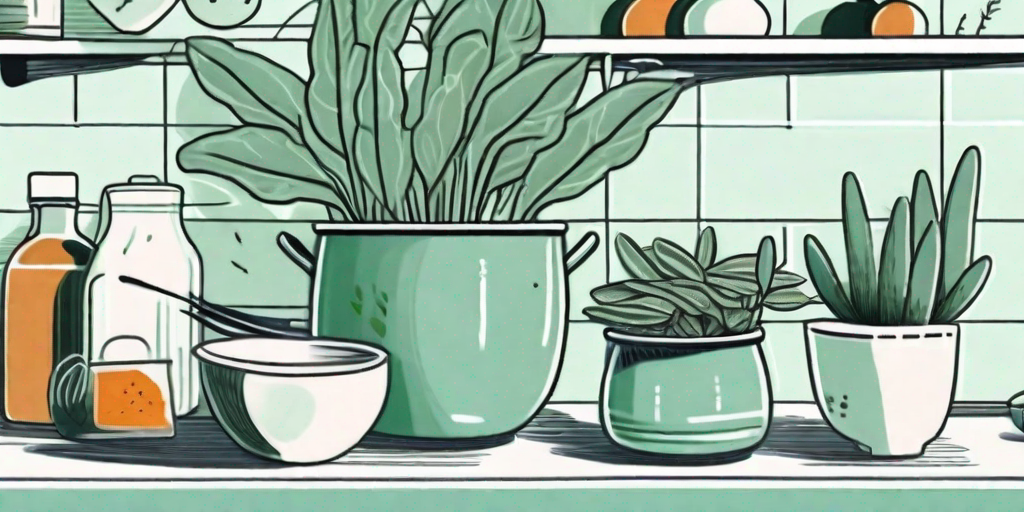
If you've ever considered growing your own herbs, sage is a fantastic place to start. Not only does it add a punch of flavor to your meals, but it also brings a touch of green to your home. This article will guide you through the process of growing sage indoors, from choosing the right pot to harvesting your first batch of leaves. So, put on your gardening gloves, and let's get started!
Why Grow Sage Indoors?
Before we dive into the how-to, let's talk about why you should consider growing sage indoors. First, it's a perennial plant, meaning it will provide you with fresh leaves year-round. Second, it's a hardy plant that can withstand a variety of conditions, making it a great choice for beginners. Lastly, it's a versatile herb that can be used in a variety of dishes, from savory roasts to sweet desserts.
Plus, there's something incredibly satisfying about using herbs you've grown yourself in your cooking. It's like adding a dash of love to every dish.
Choosing the Right Pot and Soil
Now that we've covered the why, let's move on to the how. The first step in growing sage indoors is choosing the right pot and soil.
Sage prefers well-draining soil, so look for a potting mix designed for herbs or succulents. As for the pot, it should have drainage holes to prevent waterlogging. A pot that's 8 to 10 inches in diameter should be sufficient for one sage plant.
Remember, sage is a Mediterranean herb, so it likes its soil on the dry side. Overwatering is a common mistake, so be sure to let the soil dry out between waterings.
Planting Your Sage
Once you've got your pot and soil sorted, it's time to plant your sage. You can start from seeds, but it's easier to begin with a small plant from a nursery. Simply place the plant in the pot, cover the roots with soil, and give it a good watering.
Place your pot in a sunny spot, as sage needs plenty of light to thrive. A south-facing window is ideal. If you don't have a spot with enough natural light, you can supplement with a grow light.
Caring for Your Sage Plant
Now that your sage is planted, it's time to nurture it to maturity. This involves regular watering, occasional feeding, and a bit of pruning.
As mentioned earlier, sage likes its soil on the dry side, so water sparingly. A good rule of thumb is to water when the top inch of soil feels dry to the touch. Feed your sage with a balanced liquid fertilizer every month during the growing season (spring and summer).
Pruning is important to encourage bushy growth. Simply pinch off the tips of the stems as the plant grows. This will encourage the plant to branch out and become fuller.
Harvesting and Using Your Sage
Once your sage plant is mature, you can start harvesting leaves. The best time to harvest is in the morning, when the plant's oils are at their peak. Simply snip off a few leaves as needed, being careful not to take more than one-third of the plant at a time.
Sage is a versatile herb that can be used in a variety of dishes. It pairs well with poultry, pork, and beans, and can also be used to flavor butter or oil. Plus, it's a key ingredient in stuffing, a must-have for any holiday meal.
Frequently Asked Questions
How long does it take for sage to grow?
Sage is a slow-growing plant. It can take up to two years for a plant to reach full size. However, you can start harvesting leaves as soon as the plant is established, usually within a few months of planting.
Can I grow sage from a cutting?
Absolutely! In fact, growing sage from a cutting is a great way to propagate the plant. Simply take a 4-inch cutting from a healthy plant, remove the lower leaves, and place it in a pot of soil. Keep the soil moist until the cutting has rooted, usually in about two to three weeks.
Does sage need a lot of sun?
Yes, sage needs plenty of light to thrive. Aim for at least six hours of direct sunlight a day. If you don't have a spot with enough natural light, you can supplement with a grow light.
Conclusion
There you have it, folks! A comprehensive guide to growing sage indoors. With a bit of care and patience, you'll be adding homegrown sage to your meals in no time. So, what are you waiting for? Get growing!











